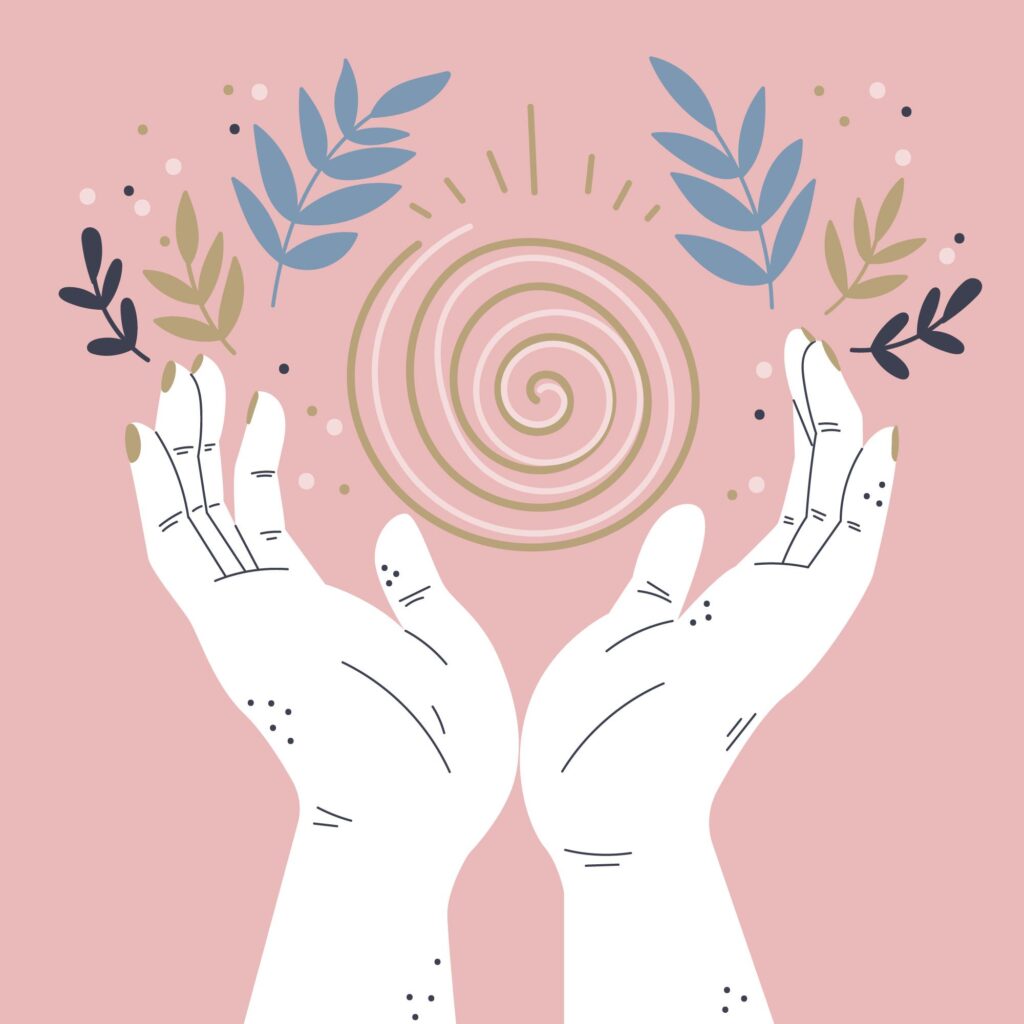SANATANA IS A TREASURE
Infinite, eternal and all encompassing
In Sanskrit, a single word can hold many meanings which are intuitively interpreted according to the context. Awareness of the context therefore precedes the meaning of the word. The meaning of Sanatana Dharma and the related concepts mentioned here is in the context of Sanatana Life Academy. There can exist other interpretations.
We welcome you with all our heart – please do join us and read on ! As we start, we are placing a few concepts for common appreciation.
We welcome you with all our heart – please do join us and read on ! As we start, we are placing a few concepts for common appreciation.
Foundations
What is Sanatana Dharma ?
Generally “Sanatana” means “Eternal” and Dharma” means “Principles or Laws”. Sanatana Dharma therefore implies “Principles that are Eternal”. Since this is given to human beings, it can be said that Sanatana Dharma is the Eternal set of Principles of Human Existence. Again, Eternal implies timelessness, anything that always was, presently is and always will be in future as well. It pervades all time and space – through Earth, Nature and as Human Life too !
Generally “Sanatana” means “Eternal” and Dharma” means “Principles or Laws”. Sanatana Dharma therefore implies “Principles that are Eternal”. Since this is given to human beings, it can be said that Sanatana Dharma is the Eternal set of Principles of Human Existence. Again, Eternal implies timelessness, anything that always was, presently is and always will be in future as well. It pervades all time and space – through Earth, Nature and as Human Life too !

Eternal Laws - Earth
Our Earth has gone through various stages of evolution over millions of years. It still is and will continue to be. These changes may have been brought about by occurrences within the earth itself, or from beyond. Irrespective of whatever the influences and results are, everything that occurs with respect to the earth are within the principles of planetary sciences. These sciences are applicable to all planets in the universe working uniquely for each and form the eternal laws for planets.

Eternal Laws - Nature
Nature follows the changes of the earth. Change in nature can be brought about by its own elements too. While, environment, flora, fauna, animals, worms, physical features and all expressions of nature change constantly, the law of balance and preservation seems to be a guiding principle that remains eternal in nature.

Eternal Laws - Human Life
Similarly a human being too has changed genetically, memetically and intellectually over ages. Expressions of these changes are visible through our physical construct, health, well-being, ideas, philosophies, technology, lifestyles and all other transactions of personal life as well as collective life as a society and species. We are changing with every generation and will continue to do so. These changes are all guided by eternal principles called Sanatana Dharma in Sanskrit.
Our Knowledge and Learning
Self Knowledge
Human beings are, were and will always be self aware beings. Awareness therefore is our ultimate reality. From awareness emerges our entire Being or Existence ( which is referred to as the pristine ‘Sat’ in our scriptures ) and Life Experience ( which in pristine form emerges as the combined ‘Chit’ and ‘Ananda’) . This knowledge is called Self Knowledge.
Wisdom
The Application of Knowledge is called “Wisdom”. Wisdom is the basis of human life and evolution. Within the animal kingdom, a human being is a mammal and the scientific name given is Homo Sapien. While the word “Homo” means human-being, the word “Sapien” finds its source in Sapio or Sapience, which means Wisdom. The capacity of wisdom is what differentiates us from all other beings; that we have a self-directed involvement in co-creating our own life experiences through the enhancement and evolution of wisdom within.
Learning
Any “data” cannot be applied unless it is arranged in the format of “information”. Similarly knowledge needs arrangement in order for wisdom to be derived. Sciences of human awareness, also called ‘Spiritual Sciences’, give us the techniques of arranging or synthesising self-knowledge into wisdom templates. This process of knowledge synthesis is called “Learning”. Applying Self Knowledge through unique wisdom templates i.e “Learning” is the purpose of human life and its eternal principle or Sanatana Dharma.
Bharata
The people and the land that has hosted, safeguarded and nourished Sanatana Dharma for all humanity are called Bharata.
Bringing Sanatana into Life
JNANA MARGA
Path of Self Knowledge and Learning Spiritual Sciences
BHAKTI MARGA
Path of Spiritual Practices
KARMA MARGA
Path of Spiritual Transactions
COMBINATION OF ALL THREE

Benefits in Human Pursuits
Human pursuits are categorised into 4 – Artha [Wealth, material and securities], Kama [Pleasure, happiness and enjoyment], Dharma [Values, dutifulness and ethics] and Moksha [Liberation from limitedness]. Bringing Sanatana into life enables one to celebrate their existence by manifesting their own reality. Our abundance and success is within our spiritual energy that is waiting to be channelised – be it through our family, relationships, career, parenting or social transactions.

Sanatana Dharma in Life - Faith
When a patient approaches a doctor with a complaint of a headache, the doctor does not ask for evidence of pain before taking up the course of action for treating the pain. That one instance of faith in the words of the patient, becomes the source for the doctor’s knowledge of medical science to come into action. In human life experience, there is always a greater subtler energy operation which is beyond our immediate sensorial perception. This gives a larger vision and meaning to human life.
When situations approach us, it takes just one instant of faith that there is more than what we can perceive, to drive us to our wisdom. Else it invokes reactions which are unconscious and programmed. Spiritual Learning strengthens faith, since it re-enforces the fact that human life comprises both sensorially and cognitively verifiable and non-verifiable truths.
When situations approach us, it takes just one instant of faith that there is more than what we can perceive, to drive us to our wisdom. Else it invokes reactions which are unconscious and programmed. Spiritual Learning strengthens faith, since it re-enforces the fact that human life comprises both sensorially and cognitively verifiable and non-verifiable truths.

Sanatana Dharma in Life - Acceptance
In the example of the doctor and patient given above, under no circumstances does the doctor react to escape or get rid of the patient. There is complete acceptance of the role given and the transaction between them. The doctor therefore takes charge. Acceptance is when one can see the hidden learning opportunity that comes along with every citation in life. Accepting this with gratitude is Grace.

Sanatana Dharma in Life - Flexibility
Human beings are resonant energy beings. Manifestations of energy are infinite in human life. Every situation leads to learning and wisdom requires one to be flexible in approach and application. Sanatana Dharma is inclusive of many ideologies and philosophies due to its flexibility. This doesn’t imply loss of focus which is always on Self Knowledge and Evolution. Any idea, thought, religion, philosophy or guiding principle, if bound within the confines of rigidity becomes a cult. Sanatana Dharma, being in flow, remains flexible at all points of time.
Guidance
Scriptures of Sanatana Dharma
The wisdom of the Rishis of Bharata are coded within our scriptures. These are our sources of self knowledge and spiritual sciences. Scriptures are dynamic words which are decoded through intuition.
Spiritual Guidance
Guidance in Sanatana Dharma is an act of love and compassion. The source points towards the path and one who is being guided walks the path, with Faith, Flexibility and Acceptance [as described above]. The onus is on the one being guided to bring the guidance to fruition. Therefore guidance is very different from advice, consultation, counsel, instruction or directions, while any one of these could be one of the elements within guidance. Spiritual guidance is an intuitive process between the source and the guided.
Specific Guidance
Our Rishis are the ultimate source for all guidance of Sanatana Dharma. Sanatana Dharma paves the way for every human being to be a self learner and receive guidance from one’s own wisdom. This is the best guidance for a human being. Specific guidance from one’s own wisdom has the same sanctity as guidance from one’s Guru [mentors], Parampara [spiritual learning lineage] or Sampradaya [traditional lineage].
General Guidance
Irrespective of specific guidance, there is general guidance that is applicable to all. The sixteen Human Life-time Sanskaras are one such guidance which have been universally templated for mankind by the Rishis. For example : Upanayana Sanskara is observed as a ritual, tradition or custom with different expressions throughout Bharata. The age in which this is performed, the name of the ceremony, the invocations and the process may differ, but the essence remains the same. In these cases, specific guidance is needed. However, Upanayana as a stage of life where self inquiry emerges, and how parents and educators may harness this opportunity to build inner wisdom templates in a child remains general guidance applicable to all.
Rules and Discipline
Within the Guidances of Sanatana Dharma, there may be rules that need to be followed for specific processes. Discipline or Anushtana is a preparatory and supportive measure for gaining best results from a spiritual practice, learning sessions or transaction. These may be seen externally as rules, such as – using the right hand to receive Prasadam, observances of bereavement rituals, fasting etc. Unlike a cult, these rules of discipline are not a destination within Sanatana Dharma. These guidelines are specific to the practitioners, process and source of guidance.
WELCOME TO SANATANA LIFE ACADEMY
Sanatana Dharma is for empowerment of all human beings. Empowerment is an internal process and is directly proportional to the dedication of the learner. This is not a path of problem solving or pain relief.
Sanatana Life Academy courses are based on general guidance that is applicable to all.

